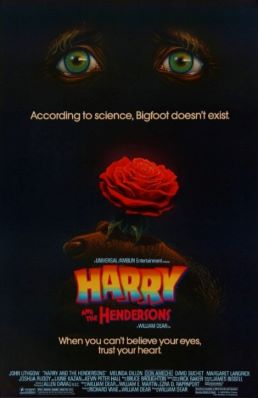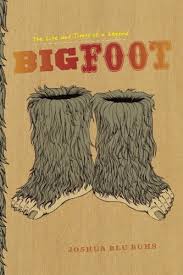
Bigfoot, also commonly referred to as Sasquatch, is a large and hairy human-like mythical creature alleged by some to inhabit forests in North America, particularly in the Pacific Northwest. Bigfoot is featured in both American and Canadian folklore, and since the mid-20th century has grown into a cultural icon, permeating popular culture and becoming the subject of its own distinct subculture.

The Patterson–Gimlin film is an American short motion picture of an unidentified subject that the filmmakers have said was a Bigfoot. The footage was shot in 1967 in Northern California, and has since been subjected to many attempts to authenticate or debunk it.

Urban legends is a genre of folklore concerning stories about an unusual or humorous event that many people believe to be true but largely are not.

The skunk ape is a large and hairy human-like mythical creature purported to inhabit the forests and swamps in the southeastern United States, most notably in Florida. It is often compared to, synonymous with, or called the "cousin" of Bigfoot, a prominent subject within North American popular culture.
Grover Sanders Krantz was an American anthropologist and cryptozoologist; he was one of few scientists not only to research Bigfoot, but also to express his belief in the animal's existence. Throughout his professional career, Krantz authored more than 60 academic articles and 10 books on human evolution, and conducted field research in Europe, China, and Java.
The Skookum cast is a plaster cast showing the imprint of what appears to be a large animal. It was discovered in a muddy wallow near Mount Adams in the southern part of Washington state in the year 2000. Enthusiasts have argued that the imprint may have been made by the mythical creature, Bigfoot, though scientific analysis says it was most likely an imprint of an elk. Scholars and academics consider Bigfoot, and alleged evidence, to be a combination of folklore, misidentification, and hoax rather than a living animal.
John Willison Green was a Canadian journalist and a leading researcher of the Bigfoot phenomenon. He was a graduate of both the University of British Columbia and Columbia University and compiled a database of more than 3,000 sighting and track reports.
The Minnesota Iceman is a sideshow exhibit and elaborate hoax that depicts a fake man-like creature frozen in a block of ice. It was displayed at shopping malls, state fairs, and carnivals in the United States and Canada in the 1960s and early 1970s and promoted as the "missing link" between man and Neanderthals. It was sold on eBay in 2013 and put on display in Austin, Texas.

Harry and the Hendersons is a 1987 American fantasy comedy film directed and produced by William Dear and starring John Lithgow, Melinda Dillon, Don Ameche, David Suchet, Margaret Langrick, Joshua Rudoy, Lainie Kazan, and Kevin Peter Hall. Steven Spielberg served as its uncredited executive producer, while Rick Baker provided the makeup and the creature designs for Harry. The film tells the story of a Seattle family's encounter with the cryptozoological creature Bigfoot, partially inspired by the numerous claims of sightings in the Pacific Northwest, California, and other parts of both the United States and Canada over three centuries. In conjunction with the film's setting, shooting took place at several locations in the Cascade Range of Washington state near Interstate 90 and the town of Index near US 2, as well as Seattle's Wallingford, Ballard and Beacon Hill neighborhoods and other locations in or around Seattle.
In Arkansas folklore, the Fouke Monster, also known as the Boggy Creek Monster and the Swamp Stalker, is purported to be an ape-like creature, similar to descriptions of Bigfoot, that was allegedly sighted in the rural town of Fouke, Arkansas during the early 1970s. The creature was alleged to have attacked a local family. It has since become a part of Arkansas folklore. It has also influenced local culture in Fouke, with some businesses capitalizing on the local lore. Stories of the creature influenced the 1972 docudrama horror film The Legend of Boggy Creek, which became the 11th highest-grossing film of 1972 and is today considered to be a cult classic.
John Russell Napier, MRCS, LRCP, D.Sc. was a British primatologist, paleoanthropologist, and physician, who is notable for his work with Homo habilis and OH 7, as well as on human and primate hands/feet. During his life he was widely considered a leading authority on primate taxonomy, but is perhaps most famous to the general public for his research on Bigfoot.
John Albert Bindernagel was a wildlife biologist who sought evidence for Sasquatch since 1963.
Raymond L. Wallace was an American amateur Bigfoot hoaxer.
Bigfoot is an alleged human or ape-like cryptid in North America. Since the mid-20th century, Bigfoot has become increasingly relevant in popular culture and is the subject of film, television, advertising, music, literature and more.

Boris Fyodorovich Porshnev was a Soviet historian known for his works on popular revolts in Ancien Régime France and a doctor of social sciences working on psychology, prehistory, and neurolinguistics as relating to the origins of man.

Sasquatch, also known as Sasquatch, the Legend of Bigfoot, is a 1976 American pseudo-documentary horror film directed by Ed Ragozzino and starring George Lauris, Steve Boergadine, and Jim Bradford. It follows a group of explorers on a summer-long search for the mythical Bigfoot creature. It was distributed by North American Film Productions, Oregon Ltd., at the height of public fascination with accounts and tales of Bigfoot sightings.
The Jacko hoax was a Canadian newspaper story about a gorilla supposedly caught near Yale, British Columbia in 1884. The story, titled "What is it?, A strange creature captured above Yale. A British Columbia Gorilla", appeared in the British Columbia newspaper the Daily Colonist on July 4, 1884. The original newspaper article describes "Jacko" as a gorilla and not a Sasquatch. However, the "Jacko" story has been used by Bigfoot advocates as evidence for the existence of Sasquatch. Many books about Bigfoot and cryptids have featured the event and cite the original newspaper article. In 2008 Michael Cremo discussed the story as possible proof for the existence of Sasquatch. The "Jacko" story was featured on the A&E television documentary series Ancient Mysteries about Bigfoot, season 4, episode 18 narrated by Leonard Nimoy. The story was also mentioned on the Bigfoot episode of the television series In Search of..., season 1, episode 5, also narrated by Nimoy. The Jacko story was mentioned in a 1976 documentary called The Mysterious Monsters.
Albert Ostman was a Canadian prospector who reported that he was abducted by a Sasquatch and held captive for six days. He stated that the event took place near Toba Inlet, British Columbia in 1924.
Rick Dyer is an American Bigfoot enthusiast known for perpetrating hoaxes surrounding the subject. Texas Monthly has called Dyer "the world's most infamous Bigfoot hunter."






